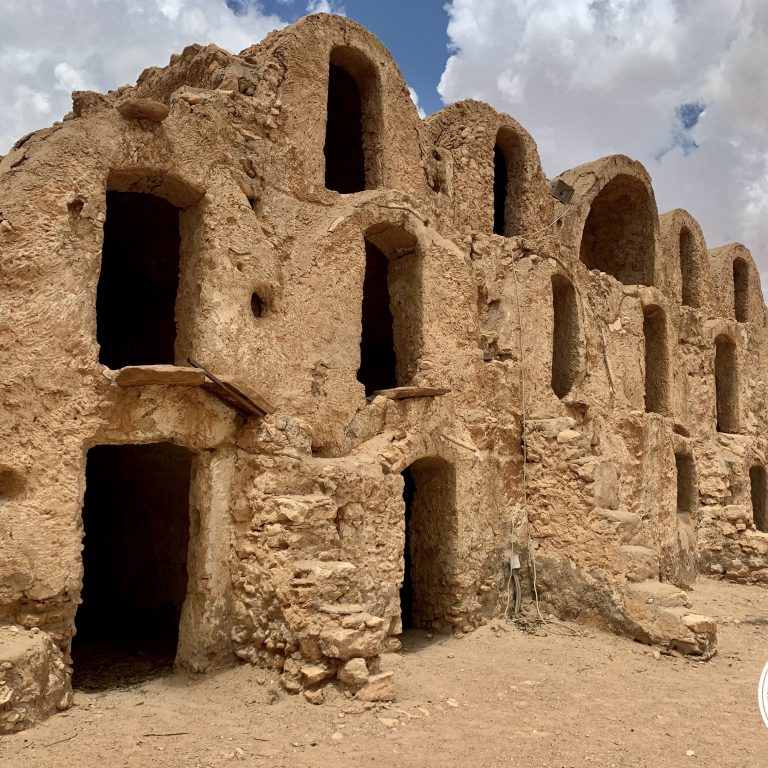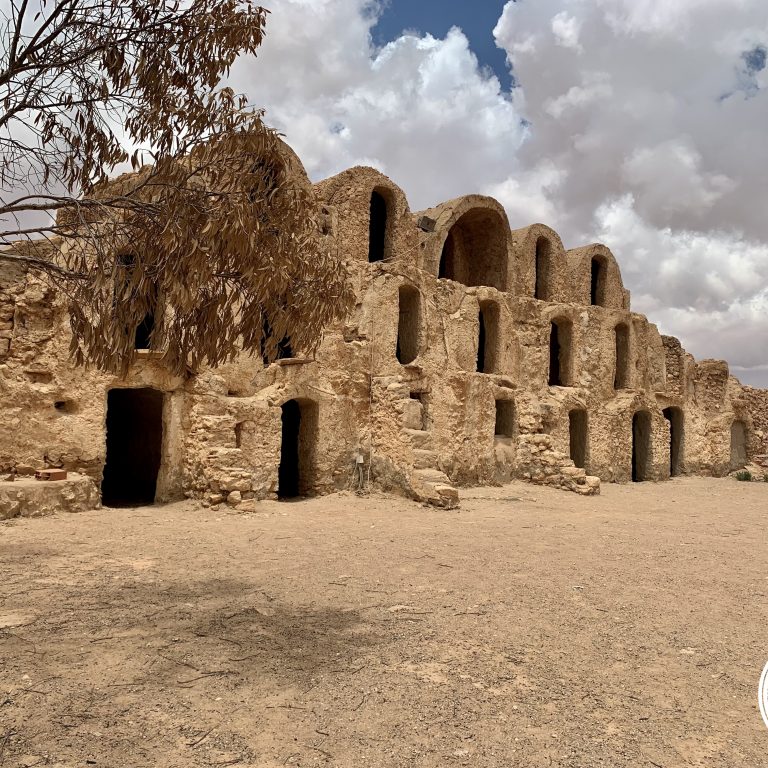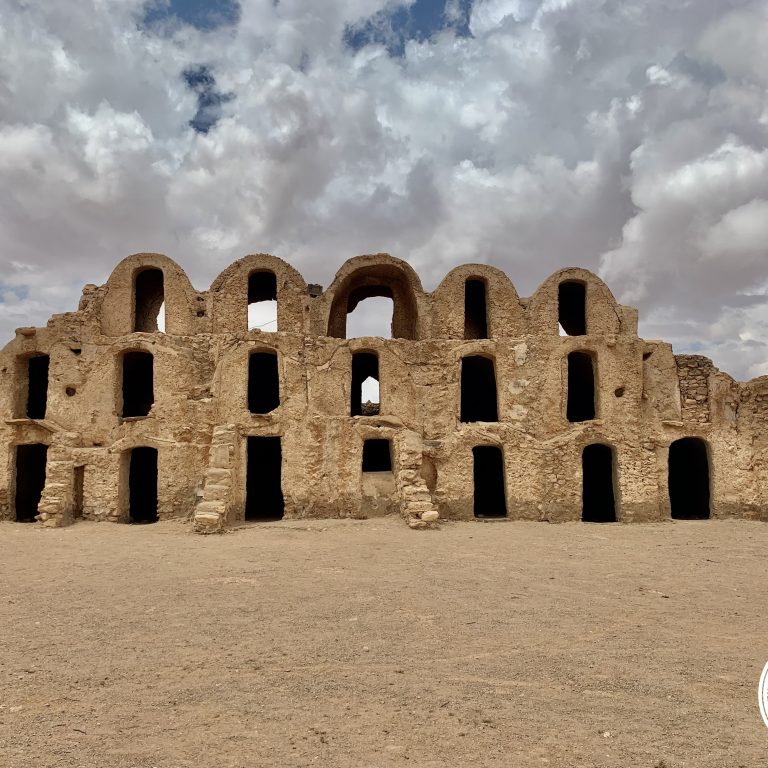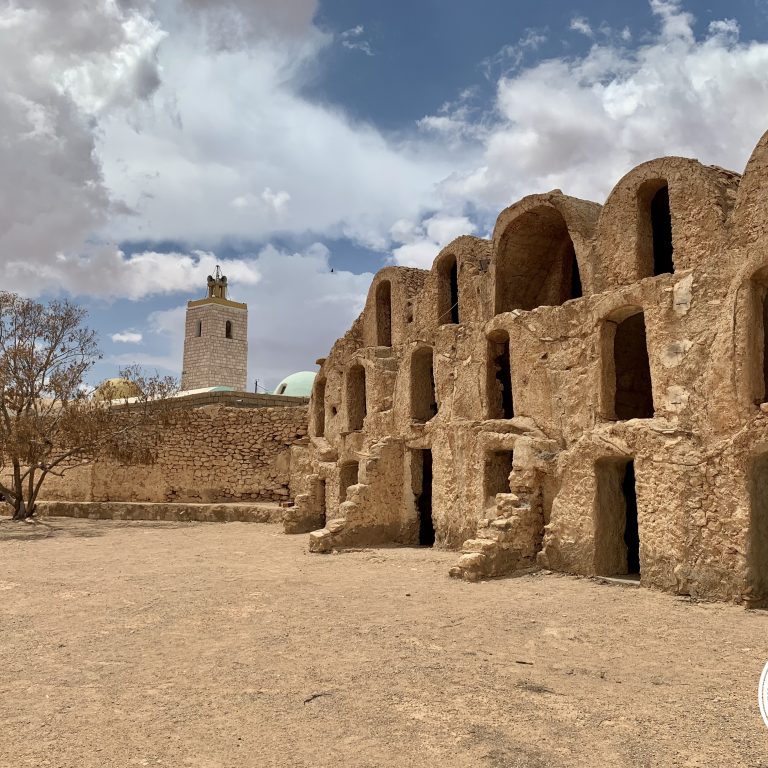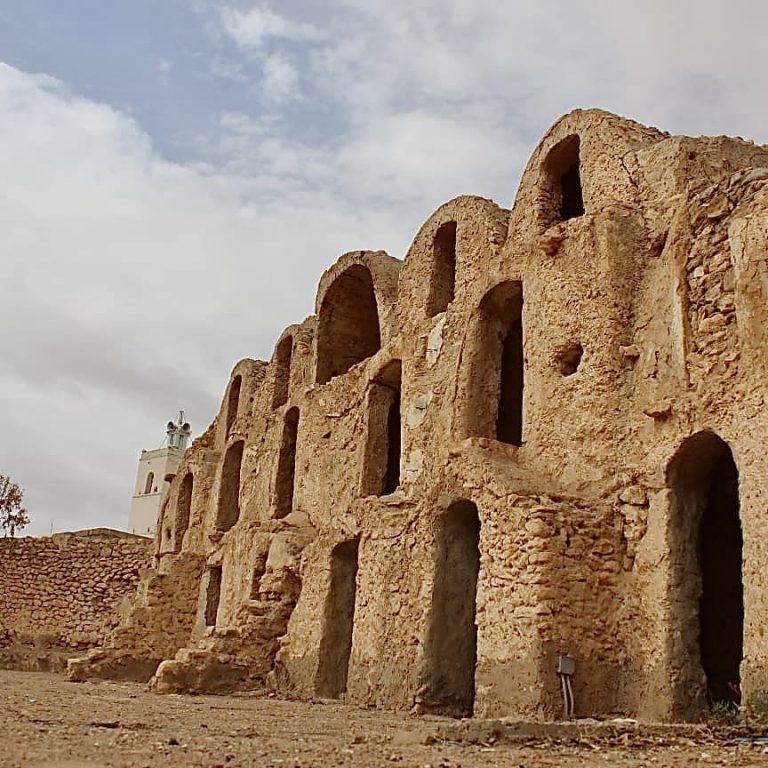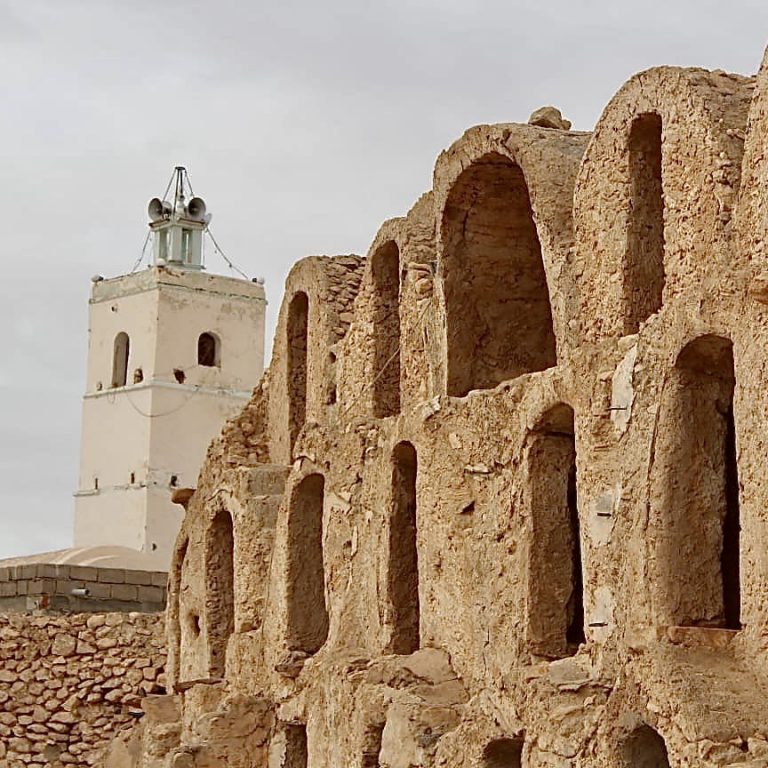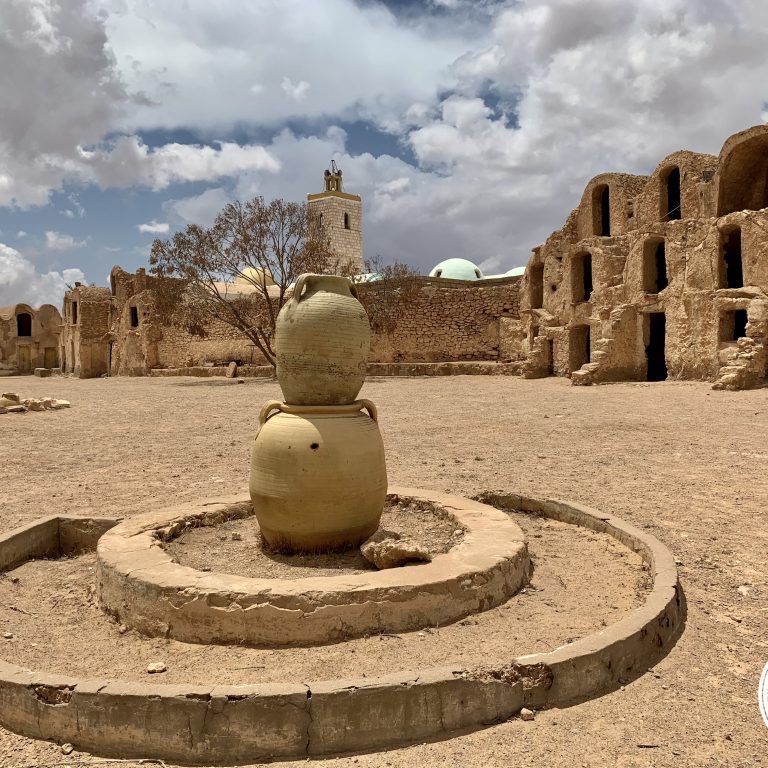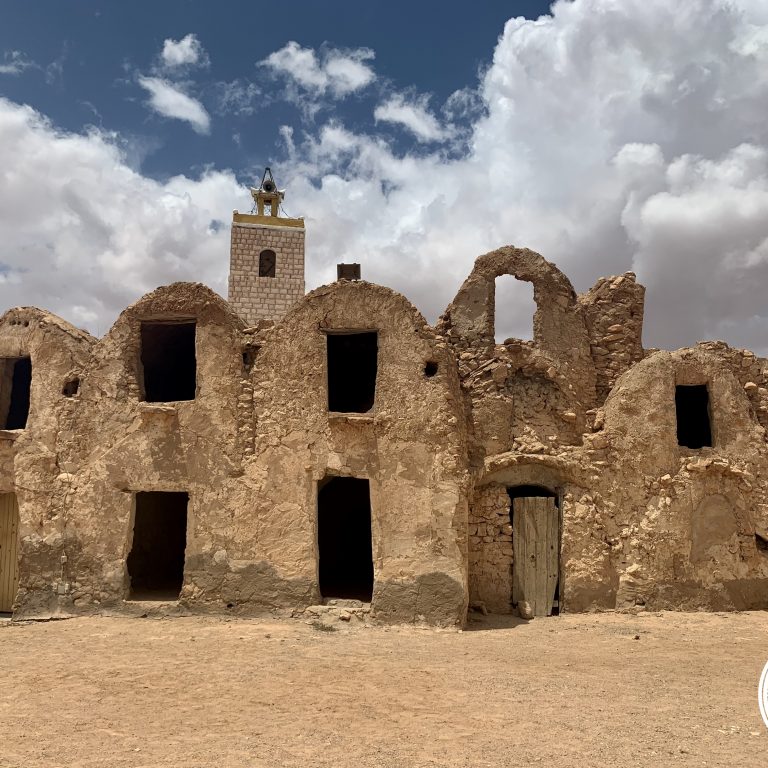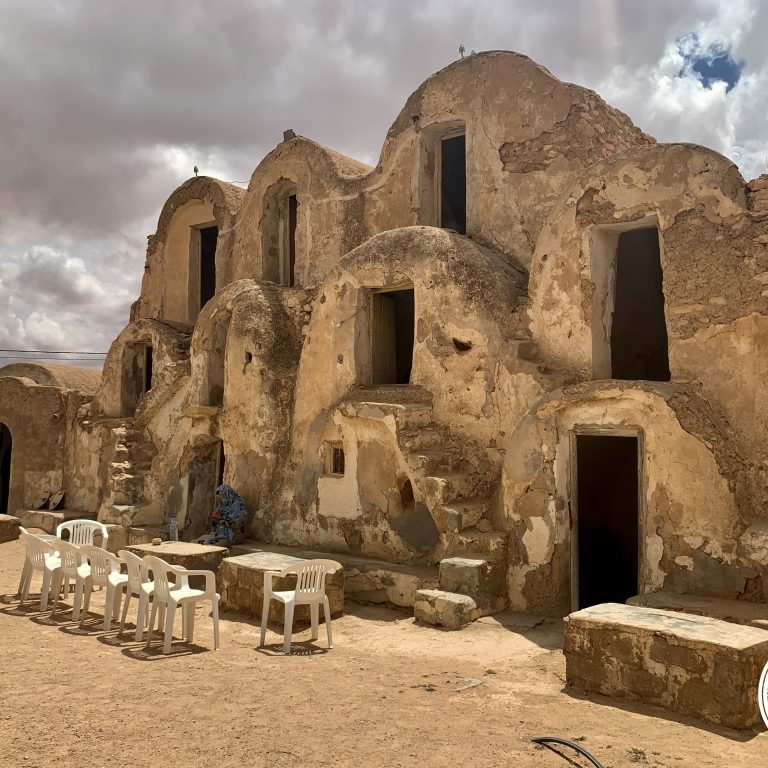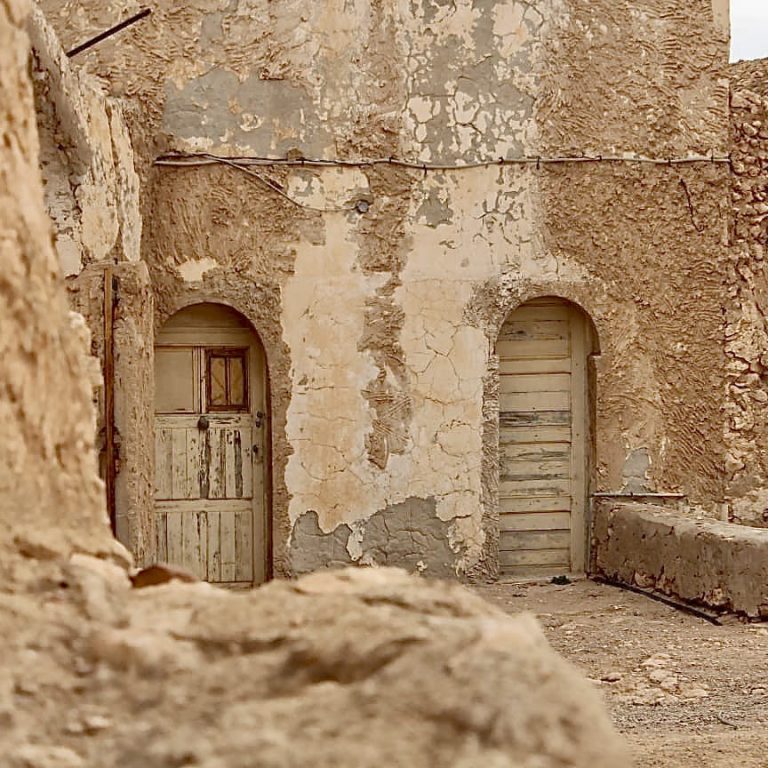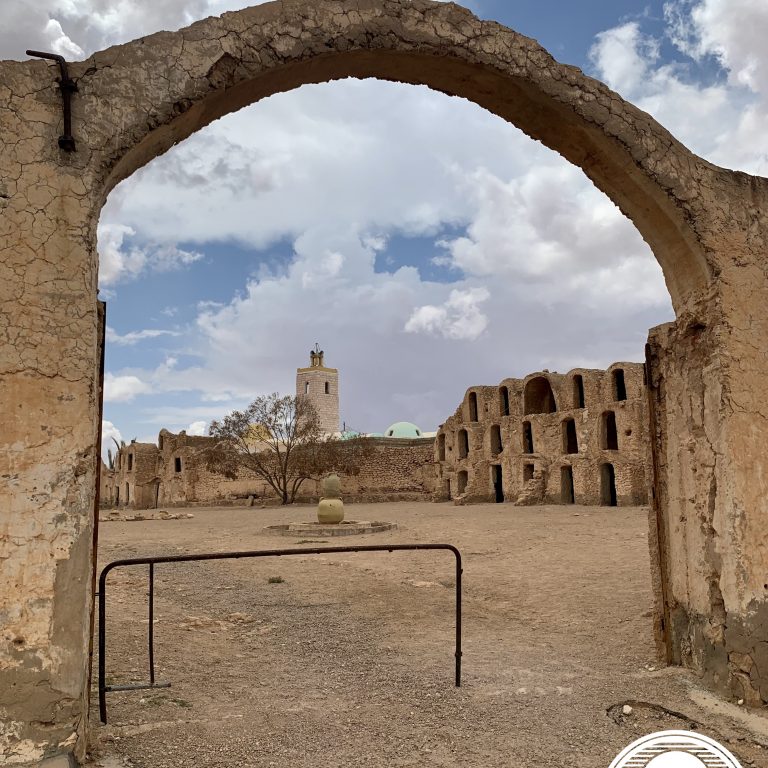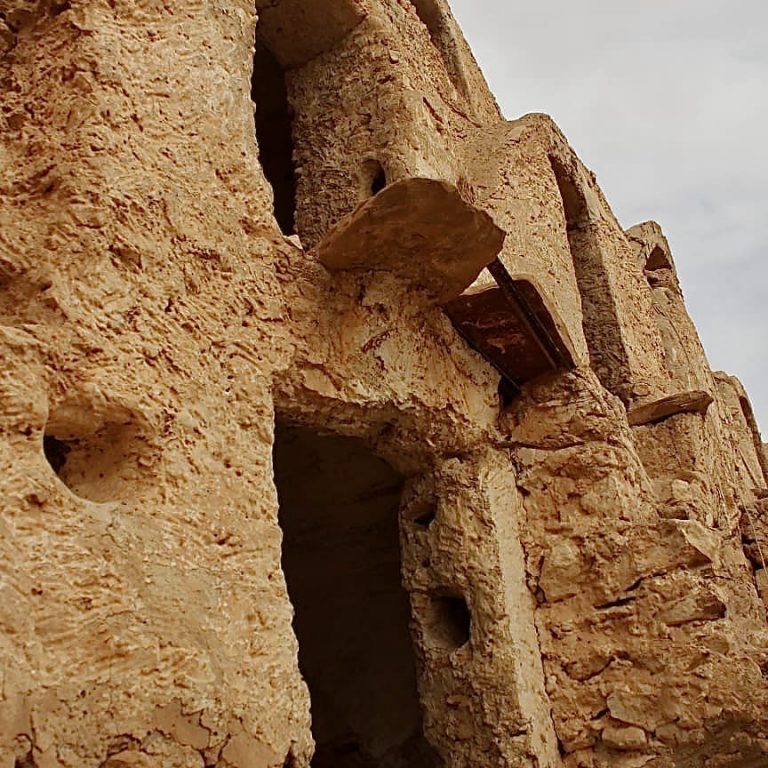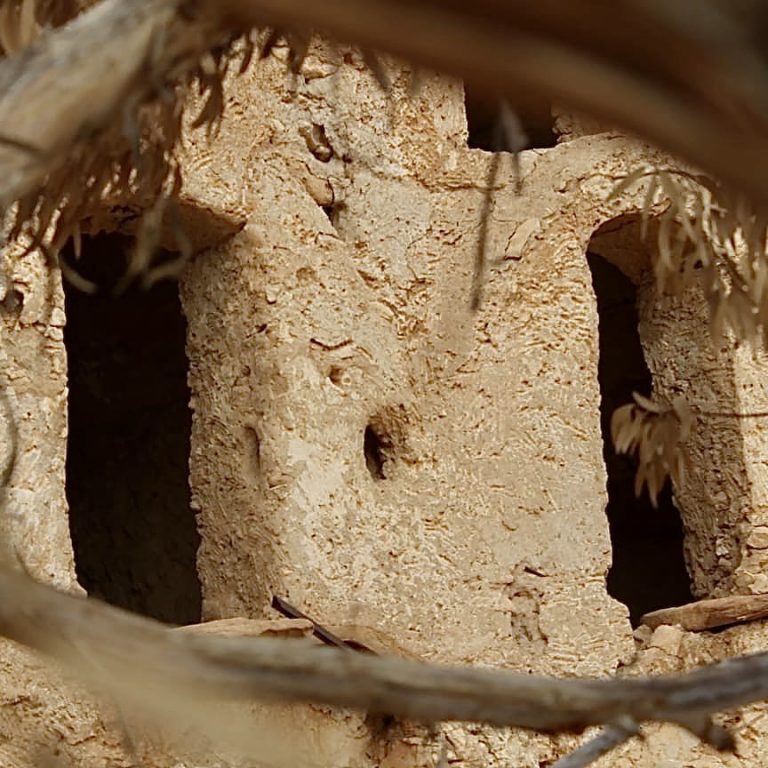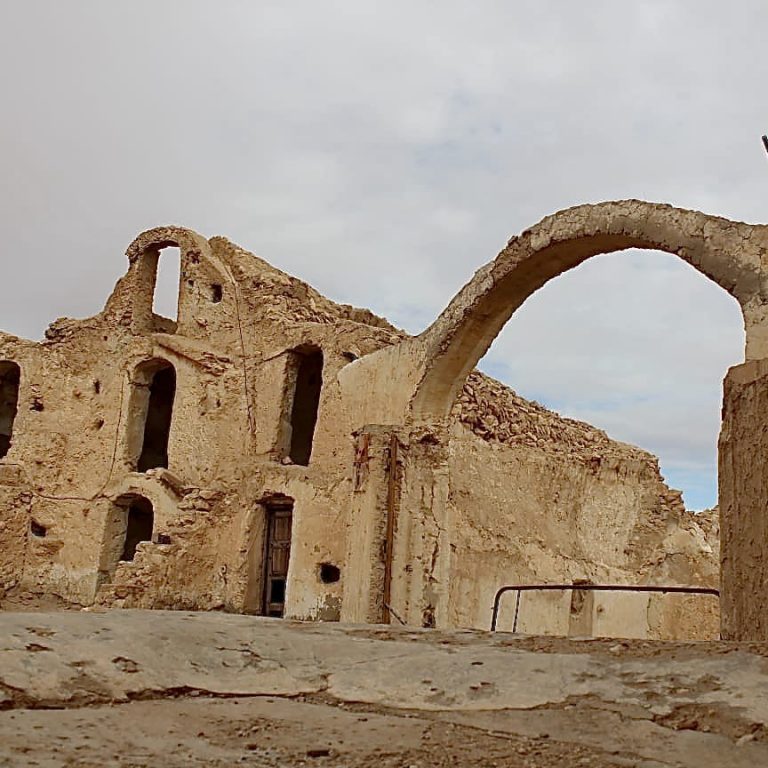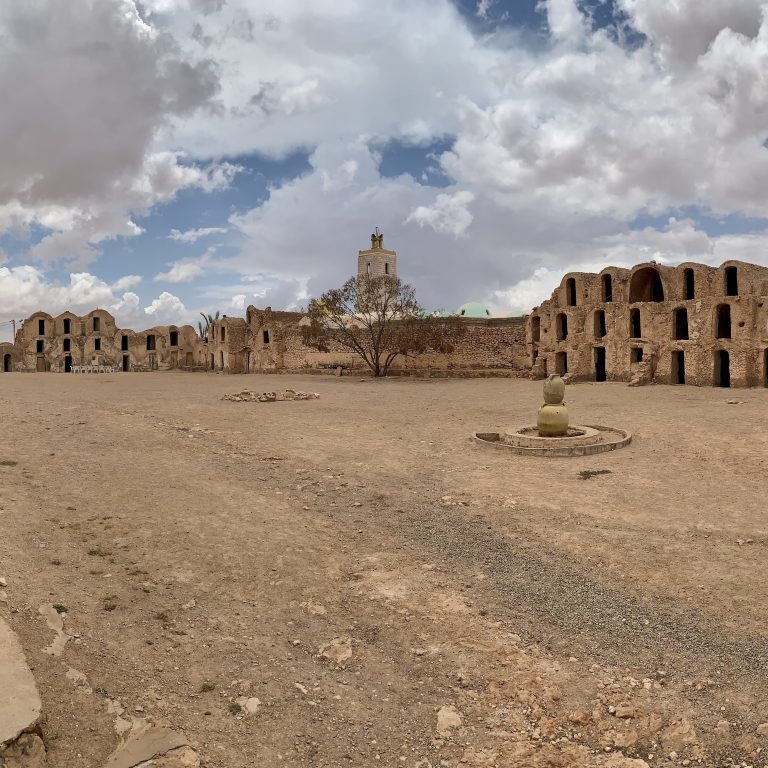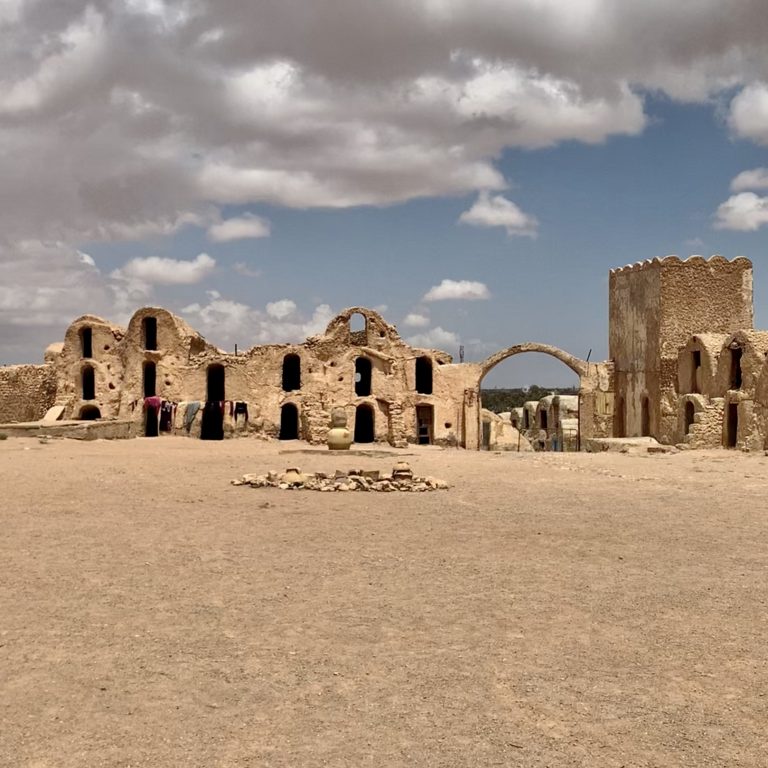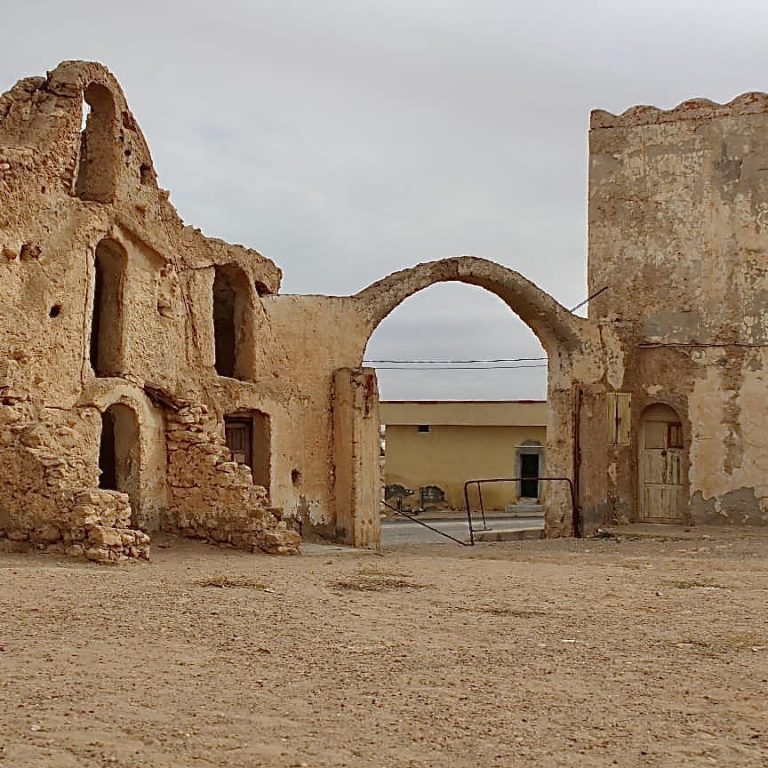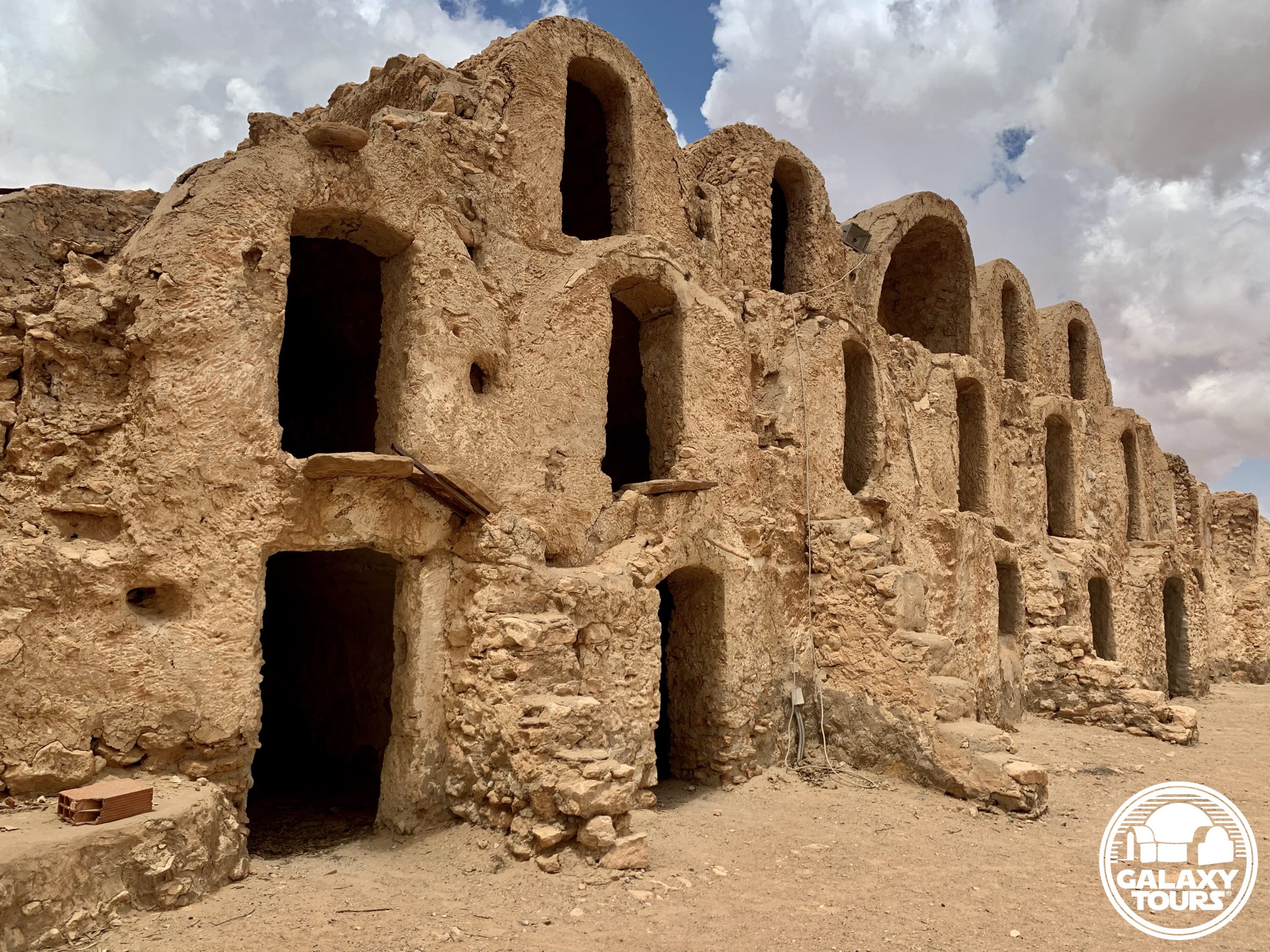
Ksar Ouled Abdallah
OVERVIEW
Site: Ksar Ouled Abdallah
GPS: 33.368891, 10.436985
Location: Metameur, Médenine Governorate, southeast Tunisia
Description: Amazigh fortified granary (18th century CE)
Star Wars recce:
Episode I – Tunisia (December 1995)
Source: Original recce photograph (Reynolds)
Star Wars scouted set concept:
Mos Espa | slave quarters
Star Wars connection discovery:
Galaxy Tours (9 December 2020)
Courtyard: The ksar boasts one of the largest courtyards among all surviving Tunisian ksour. This defining characteristic, although impressive, likely drove the decision not to film at Ksar Ouled Abdallah in preference to the more compact, visually appealing, production-friendly layout offered at nearby Ksar Ommarsia (Médenine city), the site eventually chosen for Mos Espa slave quarters street scenes.


